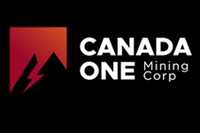Copper Supply Cuts to Protect Prices, Prevent Major Surplus

Karen Norton of Refinitiv believes copper prices have bottomed for now, but further volatile swings seem likely.
If China’s return to work happens without major setbacks, the country’s copper demand for the year as a whole will recover on the back of copper-intensive infrastructure spending.
That’s according to Karen Norton of Refinitiv. However, she said, the Asian nation’s demand for the red metal will still decline modestly year-on-year.
In the first three months of the year, copper demand in top consumer China is estimated to have fallen by a quarter, but the impact elsewhere will be felt more keenly in Q2.
“Globally, we were looking for a decline in demand in the order of 2 percent this year, although with the prospects of a V-shaped recovery widely dismissed, the risks are now heavily skewed to the downside in this regard,” Norton told the Investing News Network.
Analysts continue to predict that the supply-side response to COVID-19, which has seen miners stop production, suspend operations and revise expansion plans, will not balance the market this year.
According to Norton, copper mine supply was already on course to decline this year, but recent events make a larger fall more likely, with Refinitiv forecasting about a 3 percent year-on-year decline in global mine output in 2020. However, the market will not be balanced by the end of the 12 month period.
“At the moment prices seem to support our view that the supply response will prevent the copper market from plunging into massive surplus,” she said. “We are currently looking for a surplus in the order of around 200,000 tonnes this year, which is fairly insubstantial in this market.”
Copper prices started the year trading at US$6,165 per tonne, and were sitting at US$4,976 as of April 8 after reaching a low of US$4,617.50 in Q1.
For Norton, prices look to have bottomed for now, but further volatile swings seem likely in a market where sentiment can change very quickly.
“Much will depend on how quickly major consuming nations are able to flatten their respective coronavirus curves, and in this regard China obviously will be monitored very closely,” she said.
“Overall though we believe the fact that there is already a supply response will help to limit the downside beyond the recent lows.”
The low copper price environment has further strained mining companies, which were already experiencing pressure before the coronavirus pandemic.
“Production was already set to be constrained this year, so producers’ ability to (ramp up output as soon as the outbreak is controlled) is limited,” she said. “Significantly, some major miners are also delaying work on new projects, which will have the knock-on effect of restricting growth over a medium-term view where growth was already quite limited.”
Looking ahead, investors should continue to monitor China’s recovery, demand destruction and supply cuts, Norton added.
Don’t forget to follow us @INN_Resource for real-time news updates.
Securities Disclosure: I, Priscila Barrera, hold no direct investment interest in any company mentioned in this article.
Editorial Disclosure: The Investing News Network does not guarantee the accuracy or thoroughness of the information reported in the interviews it conducts. The opinions expressed in these interviews do not reflect the opinions of the Investing News Network and do not constitute investment advice. All readers are encouraged to perform their own due diligence.




